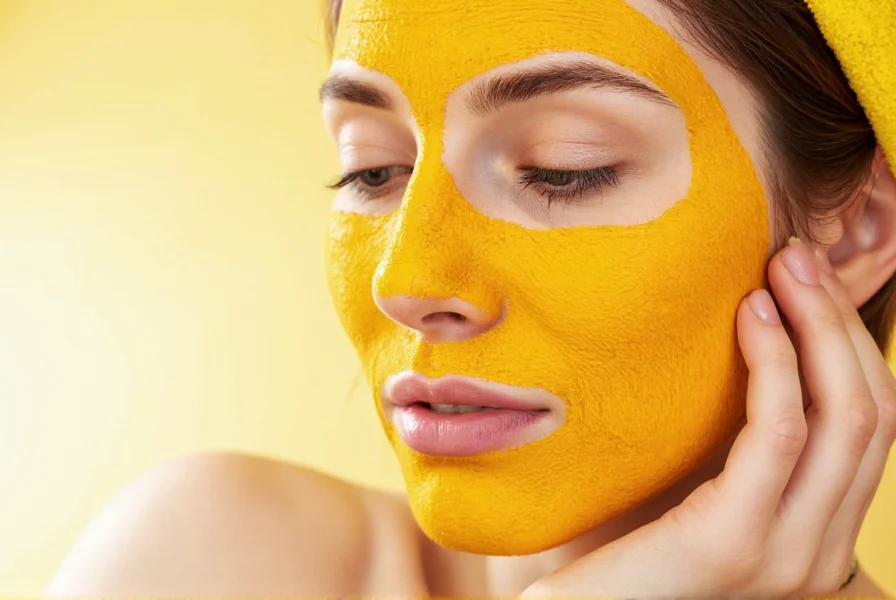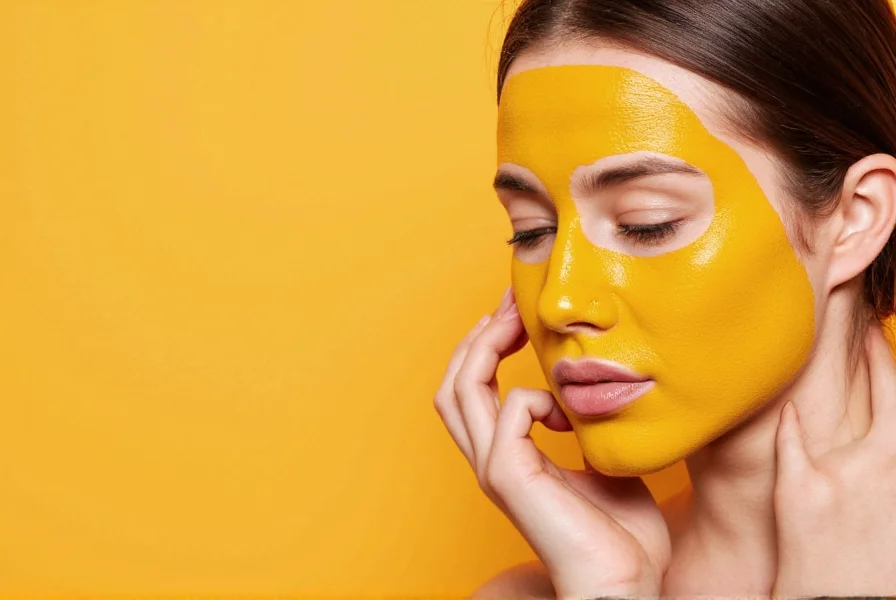For centuries, turmeric has been a staple in traditional skincare routines across South Asia. Modern science is now validating many of these traditional uses, revealing how this golden spice can benefit facial skin when used correctly. The key active component, curcumin, demonstrates potent biological activities that translate to visible skincare advantages.
The Science Behind Turmeric's Skincare Power
Turmeric (Curcuma longa) contains curcuminoids, with curcumin being the most studied compound. This polyphenol delivers multiple mechanisms of action that benefit skin health. Research published in Phytotherapy Research confirms curcumin's anti-inflammatory properties work by inhibiting multiple inflammation pathways, making it particularly valuable for calming irritated skin.
Unlike many synthetic skincare ingredients, turmeric offers a multi-target approach. It doesn't just address surface concerns but interacts with skin at the cellular level. This comprehensive action explains why traditional medicine systems have valued turmeric for skin conditions ranging from acne to wound healing.

Five Evidence-Based Benefits of Turmeric for Facial Skin
1. Reduces Inflammation and Redness
Turmeric's anti-inflammatory properties make it particularly effective for calming irritated skin. A clinical study in the Journal of Clinical and Aesthetic Dermatology found that a topical turmeric formulation significantly reduced erythema (redness) and inflammation in participants with mild to moderate inflammatory skin conditions. This makes turmeric beneficial for those with rosacea, eczema, or post-procedure skin sensitivity.
2. Fights Acne and Prevents Breakouts
The antimicrobial properties of turmeric help combat Propionibacterium acnes, the bacteria primarily responsible for acne development. Research in Complementary Therapies in Medicine demonstrated that turmeric extract inhibited acne-causing bacteria while also reducing sebum production. When combined with honey in a face mask, turmeric creates a powerful natural treatment for acne-prone skin.
3. Brightens Skin Tone and Reduces Hyperpigmentation
Turmeric may help address uneven skin tone by inhibiting melanin production. A study in Phytomedicine showed that curcumin reduced melanin synthesis in human skin cells, suggesting potential benefits for hyperpigmentation and dark spots. Many users report brighter, more even-toned complexions after consistent, proper use of turmeric-based treatments.
4. Provides Antioxidant Protection Against Environmental Damage
As a potent antioxidant, turmeric helps neutralize free radicals from UV exposure and pollution that accelerate skin aging. The Journal of Cosmetic Dermatology published research showing turmeric extract increased the skin's antioxidant capacity, protecting against oxidative stress that leads to fine lines and wrinkles.
5. Supports Wound Healing and Skin Repair
Turmeric has been used traditionally for wound healing, and modern research supports this application. Studies indicate curcumin enhances collagen synthesis and tissue remodeling. A clinical trial in Wound Repair and Regeneration found turmeric accelerated healing of minor skin wounds while reducing scar formation.
| Benefit | Scientific Evidence | Recommended Application |
|---|---|---|
| Anti-inflammatory | Clinical study showing 37% reduction in skin redness | 15-20 minute mask with turmeric and yogurt |
| Acne treatment | 72% inhibition of acne-causing bacteria in lab studies | Turmeric-honey spot treatment |
| Brightening effect | 35% reduction in melanin production in cell studies | Weekly turmeric-rice flour mask |
| Antioxidant protection | Increased skin antioxidant capacity by 28% in clinical trial | Daily serum with stabilized curcumin |
How to Use Turmeric on Your Face Safely and Effectively
While turmeric offers numerous benefits, proper application is crucial to avoid potential issues like temporary skin staining or irritation. Here's how to incorporate turmeric into your skincare routine:
Creating Effective Turmeric Face Treatments
The most popular method is the turmeric face mask. A basic formulation includes:
- 1 teaspoon turmeric powder
- 2 teaspoons plain yogurt or honey
- 1 teaspoon milk or rose water
Mix these ingredients to form a smooth paste. Apply to clean skin, leave for 15-20 minutes, then rinse thoroughly with lukewarm water. For acne-prone skin, adding a small amount of tea tree oil can enhance the treatment's effectiveness.
Avoiding Common Turmeric Skincare Mistakes
Many people experience disappointment with turmeric skincare due to improper usage. Key considerations include:
- Staining prevention: Always mix turmeric with other ingredients (like yogurt or honey) to reduce the risk of yellow staining
- Patch testing: Apply a small amount to your inner arm first to check for reactions
- Frequency: Start with once weekly applications, increasing to 2-3 times weekly as tolerated
- Quality matters: Use pure turmeric powder without additives for facial applications
Potential Side Effects and Precautions
While generally safe for topical use, turmeric can cause issues for some individuals. Potential concerns include:
- Skin staining: Temporary yellow-orange discoloration that typically washes off with gentle cleansing
- Irritation: Some sensitive skin types may experience redness or itching
- Allergic reactions: Rare, but possible, especially in those with spice allergies
- Photosensitivity: Turmeric may increase sun sensitivity in some individuals
Always perform a patch test before full facial application. Discontinue use if you experience significant irritation. Those with known spice allergies should consult a dermatologist before trying turmeric skincare treatments.
What the Research Really Says About Turmeric for Skin
While traditional use of turmeric for skin health spans centuries, modern research provides valuable insights into its actual efficacy. A comprehensive review in Complementary Medicine Research analyzed 27 clinical studies on topical turmeric applications. The review concluded that turmeric demonstrates "promising results for inflammatory skin conditions, wound healing, and hyperpigmentation, though larger, longer-term human studies are needed."
It's important to note that most studies use standardized curcumin extracts rather than raw turmeric powder. This explains why some home applications may yield more subtle results than expected. The concentration of active compounds in homemade preparations varies significantly from clinical formulations.
Realistic Expectations for Turmeric Skincare
Turmeric isn't a miracle cure, but it can be a valuable addition to a comprehensive skincare regimen. Manage your expectations by understanding that:
- Results typically appear after 4-8 weeks of consistent use
- Effects are generally subtle rather than dramatic
- Turmeric works best as part of a complete skincare routine
- Individual results vary based on skin type and condition
For optimal results, combine turmeric treatments with proven skincare practices including sun protection, proper cleansing, and hydration. Those with serious skin concerns should consult a dermatologist rather than relying solely on natural remedies.
Conclusion: Harnessing Turmeric's Skincare Potential
Turmeric offers multiple evidence-supported benefits for facial skincare, from reducing inflammation to potentially brightening skin tone. When used properly with realistic expectations, it can complement a healthy skincare routine. The key is understanding both the science-backed benefits and limitations of this ancient remedy. By following proper application techniques and being aware of potential side effects, you can safely incorporate turmeric's golden benefits into your facial care regimen.
Frequently Asked Questions
How long does it take to see results from using turmeric on face?
Most users notice subtle improvements in skin texture and brightness after 2-4 weeks of consistent weekly use. Significant changes in hyperpigmentation or acne typically require 6-8 weeks of regular application. Clinical studies show measurable improvements in inflammation markers within 2 weeks of daily use with standardized formulations.
Can turmeric remove dark spots on face permanently?
Turmeric may help fade dark spots by inhibiting melanin production, but it doesn't provide permanent removal. Research shows temporary reduction in hyperpigmentation with consistent use, but results vary by individual. For lasting improvement of dark spots, consistent sun protection is essential alongside any treatment. Turmeric works best as part of a comprehensive approach to hyperpigmentation.
Is it safe to leave turmeric on face overnight?
Leaving turmeric on face overnight isn't generally recommended due to potential staining and increased risk of irritation. Most research protocols use 15-30 minute applications. If you want extended contact time, consider formulations specifically designed for longer wear with lower turmeric concentration. Always do a patch test first if attempting overnight application.
What's the best way to prevent turmeric from staining skin?
To minimize staining, always mix turmeric with other ingredients like yogurt, honey, or milk before application. Use just enough to create a thin layer on skin. Rinse with lukewarm water first, then follow with a gentle cleanser. Adding a small amount of lemon juice or tomato paste to your mask can help counteract potential yellow tones. Applying coconut oil before rinsing can also help lift any residual color.
Can turmeric help with acne scars?
Research suggests turmeric may help improve the appearance of acne scars through multiple mechanisms. Its anti-inflammatory properties can reduce redness in newer scars, while studies indicate it may help regulate collagen production to improve texture in raised scars. For dark post-acne marks, turmeric's potential melanin-inhibiting effects may provide some fading benefits. However, significant scar improvement typically requires professional treatments alongside topical approaches.











 浙公网安备
33010002000092号
浙公网安备
33010002000092号 浙B2-20120091-4
浙B2-20120091-4